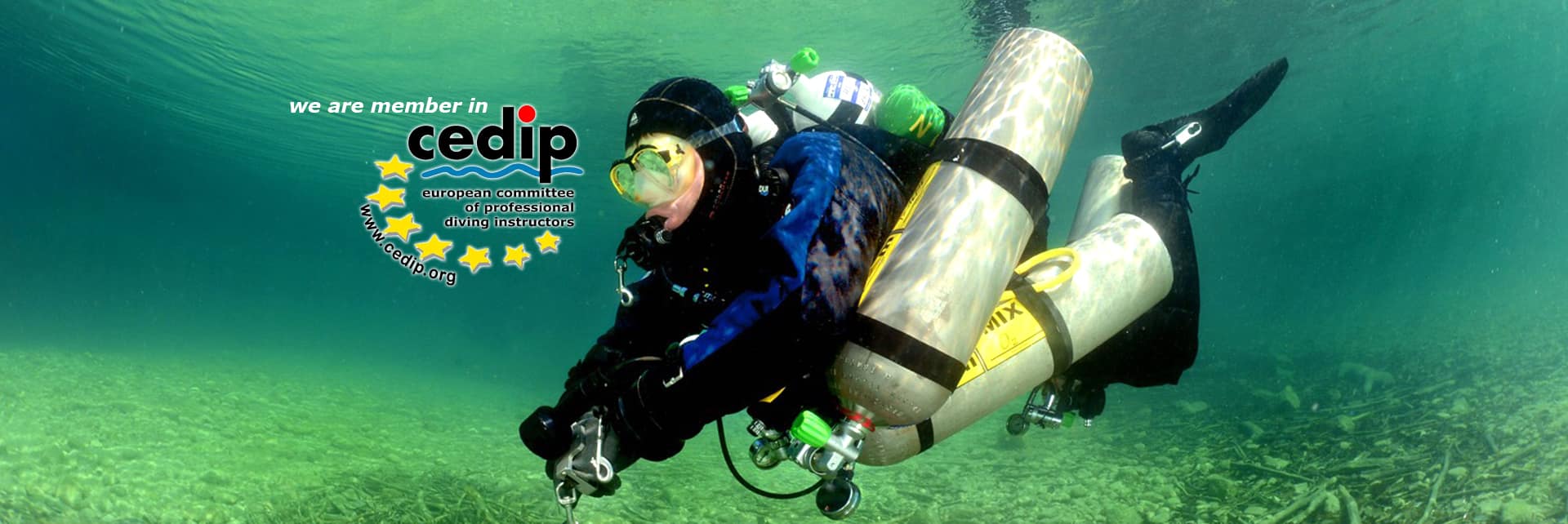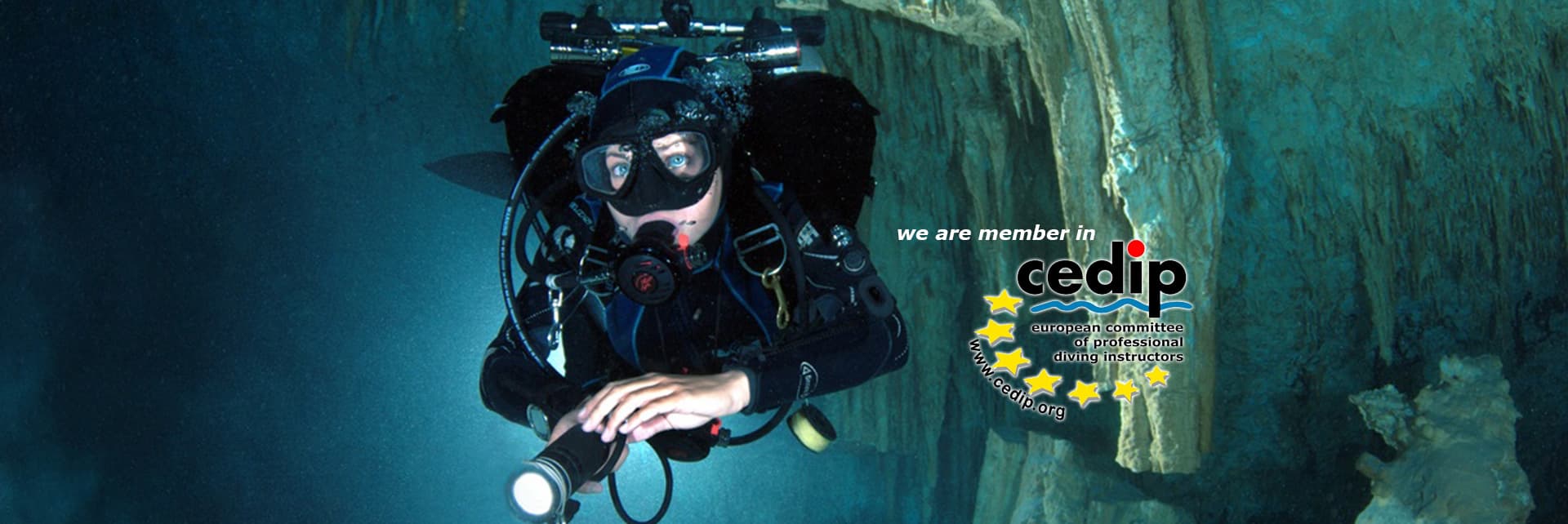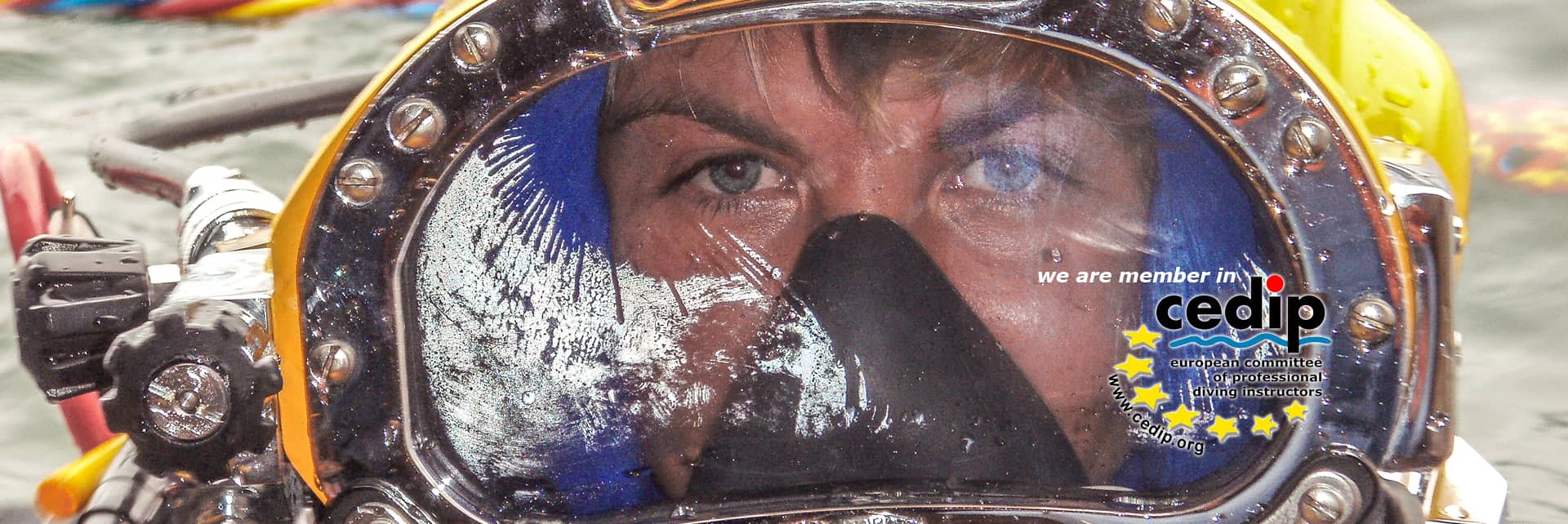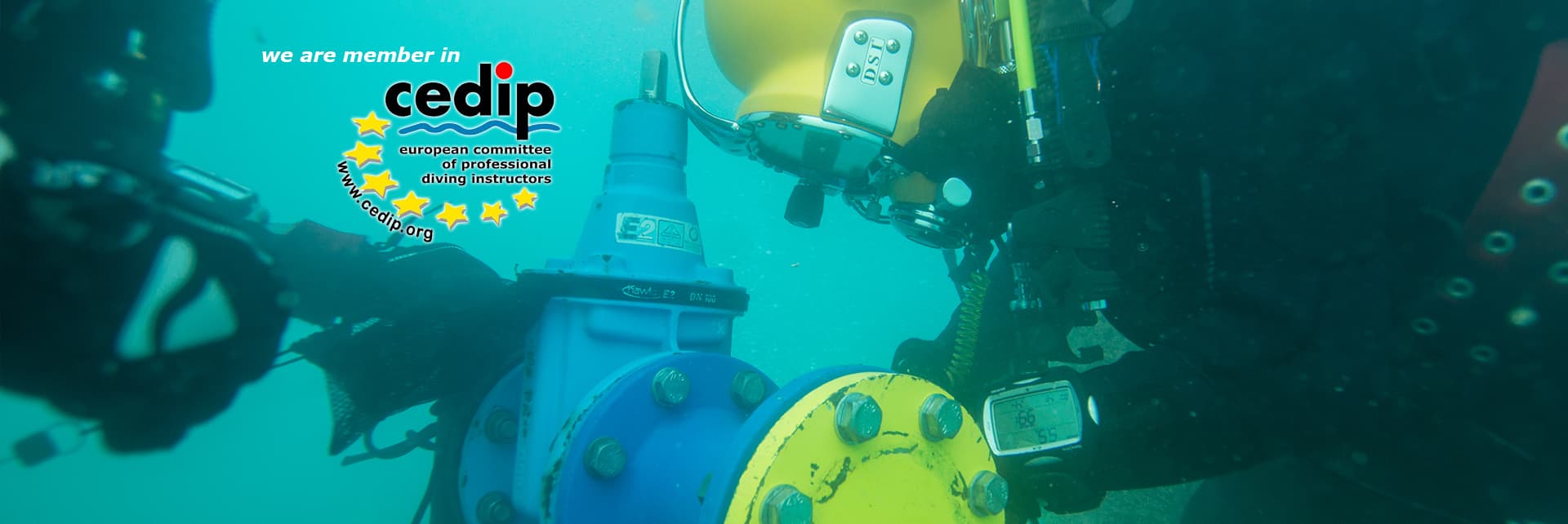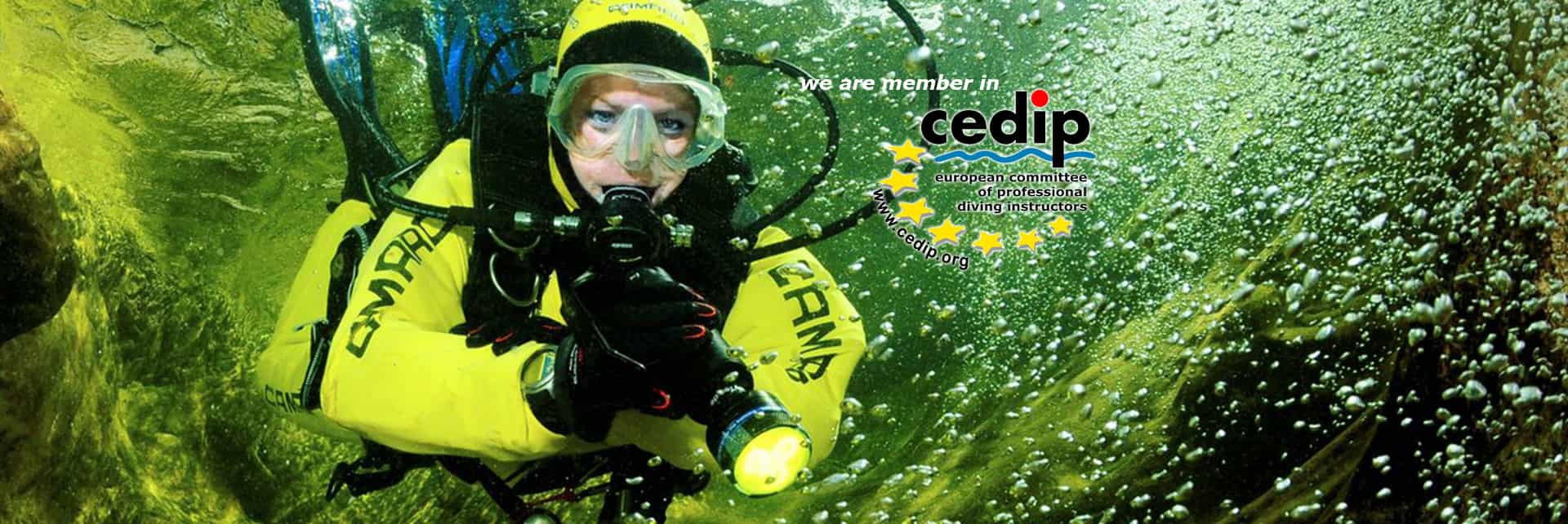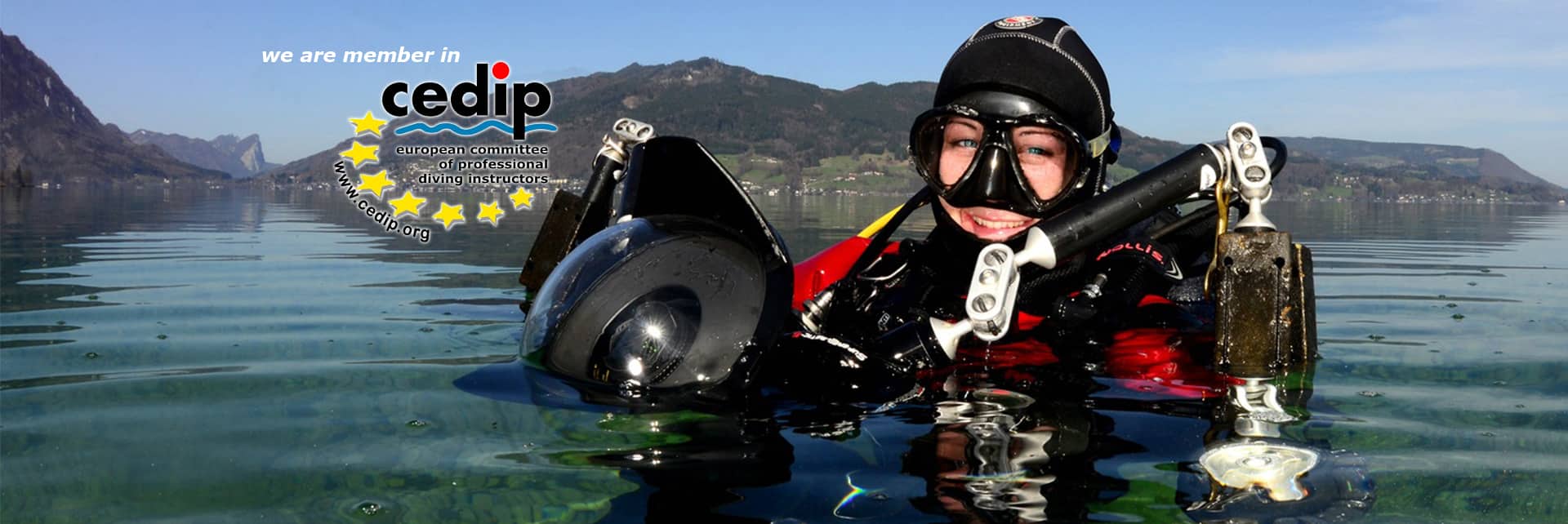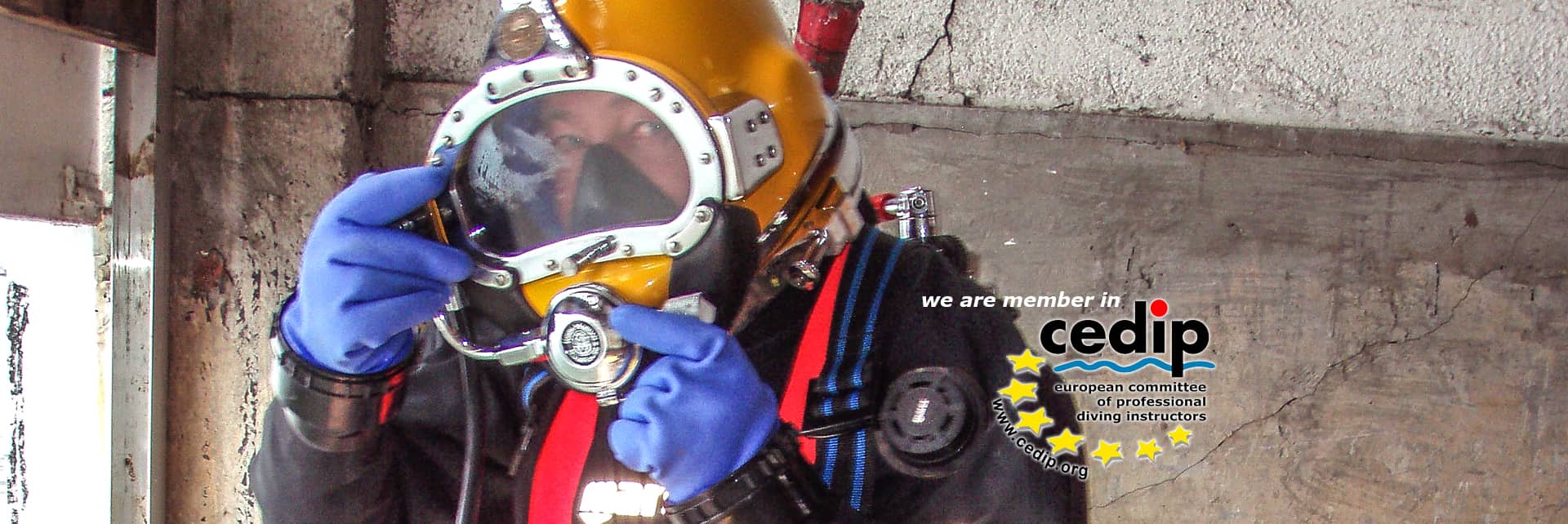pressure and tissue saturation
The hydrostatic pressure
A total pressure acts on the diver, which is made up of the air pressure resting on the water and the pressure of the water column.
A 10 meter high water column generates a pressure of one bar, so the total pressure at a water depth of 10 meters is 2 bar. In order to prevent the air-filled cavities from being compressed, pressure equalization must be established. This is done on the one hand by the demand valve, which supplies air at the appropriate ambient pressure, and on the other hand by forcing air into the body’s own cavities (e.g. middle ear).
The relationship between pressure and volume plays a major role in our body, since changes in the pressure-volume relationship can cause damaging deformations in the boundary media (e.g. eardrum: outside water with a certain pressure, inside air whose pressure needs to be equalized).
This is based on the most important physical law for the diver:
Boyle Marriott’s law:
px V = const.
The relationship between pressure and volume is constant up to a certain point.
The tissue saturation
As we already know, when diving, we breathe air that is under pressure ( compressed air ) and that is adjusted to the corresponding water pressure by the regulator.
Air is composed of different gases: 78% nitrogen, 21% oxygen and others (noble gases, carbon dioxide, etc.). In its molecular form, nitrogen does not form any chemical bonds; like the noble gases, it is inert. When breathing increased breathing gas pressures and thus also breathing increased nitrogen partial pressure, our body absorbs inert gases and physically dissolves them in the blood and body tissues.
We saturate ourselves with a gas; nitrogen plays the most important role for the diver. It is now important to get rid of this dissolved nitrogen when surfacing, to exhale it without forming gas bubbles. This results in the slow ascent speed and the observance of safety stops at certain water depths.
Disregarding these rules can lead to a diving accident , the so-called Caisson’s disease, which can be associated with significant permanent health problems. A good example of gas bubble formation can be seen in a bottle of mineral water: unopened, it is under pressure, carbon dioxide is dissolved, no gas bubbles are visible. When opening and rapid pressure relief (would correspond to surfacing too quickly), gas bubbles bubble out.
In this context, the following laws also apply:
Dalton’s law:
P total = p1 + p2 + p3 + ….. pn
The total pressure of a gas is equal to the sum of the partial pressures
Henry’s law:
The amount of gas that can dissolve in a liquid at a given temperature is proportional to the pressure of the undissolved gas.
